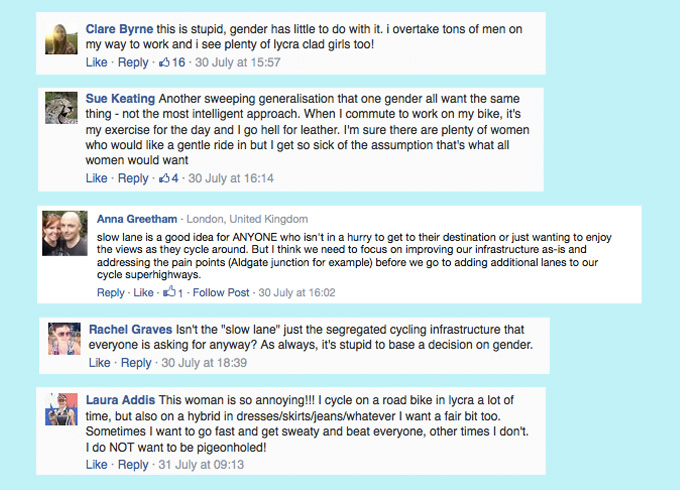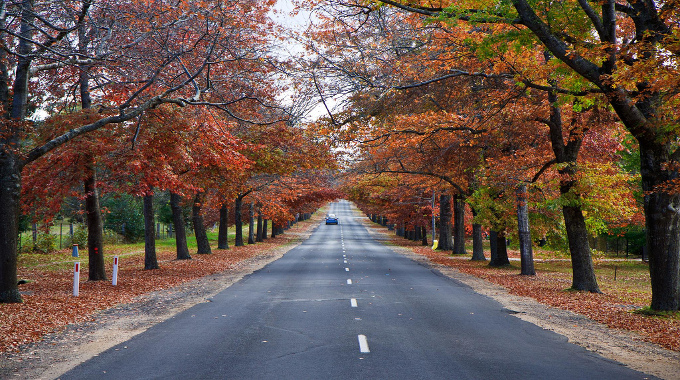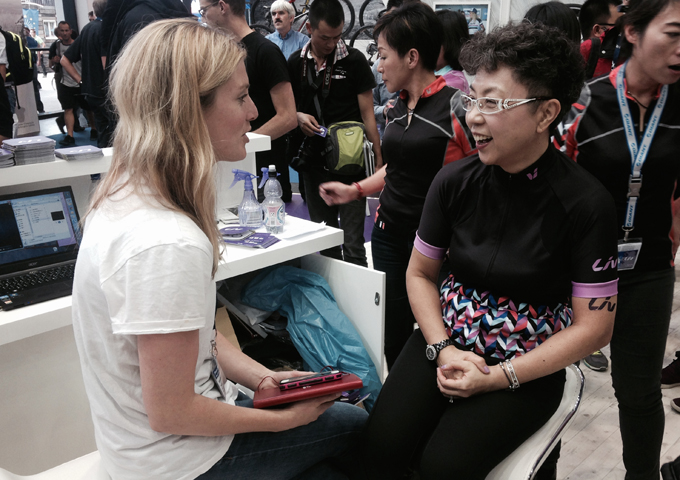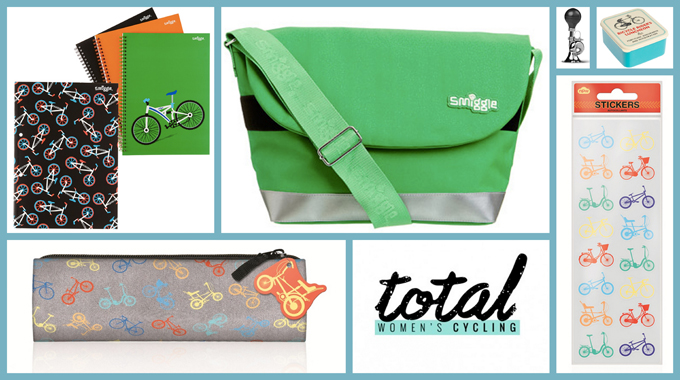
Last week, ex-Labour minister Meg Hillier caused a stir when she suggested that women who cycle to work might feel more comfortable and more likely to take to two wheels if they could have a nice segregated slow lane to pootle in, apart from the lycra clad men speeding by on their carbon machines.
Unsurprisingly, this provoked a lot of comment and debate from readers of Total Women’s Cycling.

Then, on Friday, Elizabeth Walters wrote a response in The Telegraph.
In it, she shared her experience of cycling to work, and her opinion that there is indeed a difference between women and men when it comes to cycling to work. Walters suggests that women tend to ‘hang back’ and are more laid back than their male counterparts. “On the roads, women do tend to be more naturally cautious. You won’t often catch us skipping a red light, overtaking on a bend or berating a driver. All of which I witness men do on a daily basis” she says.
Both these pieces raise all the usual responses, and have the same obvious flaws. Yes, many men ‘pootle’ to work. No, there is nothing inherently wrong with ‘pootling’ or in going fast. Yes, many women ride fast on their commute. These are facts that actually anyone who commutes by bike knows and can observe on a daily basis.
It also raises a lot of the usual questions. Do men really cycle in a more risky fashion than women? Are women concerned with getting sweaty and how they look in lycra? The problem with these questions is of course they look for blanket sweeping statements as an answer, where in fact there are many different motivations for and attitudes to cycling to work than simply ‘men think this, women think that’.
Based on the highly unscientific observation of one route into Central London (my commute in fact) it seems that all the ‘types’ of cyclist (lycra clad road cyclist, gym-wear clad commuter bike rider, casual or smartly besuited Brompton, Barclay or Dutch bike rider) exist for both genders, and – over the summer at least – are broadly proportionate for each. The main difference in fact is that there are still more men than women cycling to work.
There are of course many variables that will affect who rides, when, and what and how they ride. On the route in question, along a wide cycling super highway, on a wide road, with advanced stop lines, it feels like a welcoming environment for cyclists. In other parts of the capital, it’s a very different situation.
And here we come back to the crux of the issue, one that unfortunately got overshadowed by appalling choice of words by one ex-Labour Minister.
We need both the infrastructure on the roads and the overall attitudes of road users to be more cycle-friendly, irrespective of gender, speed, attire or location.
As one commenter on Facebook put ‘Slow lane? Does that mean we get two lanes instead of none?’





